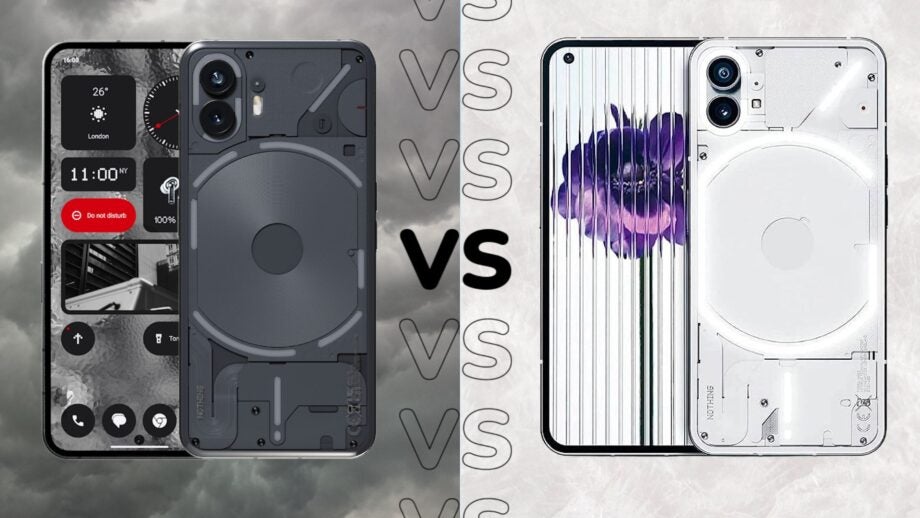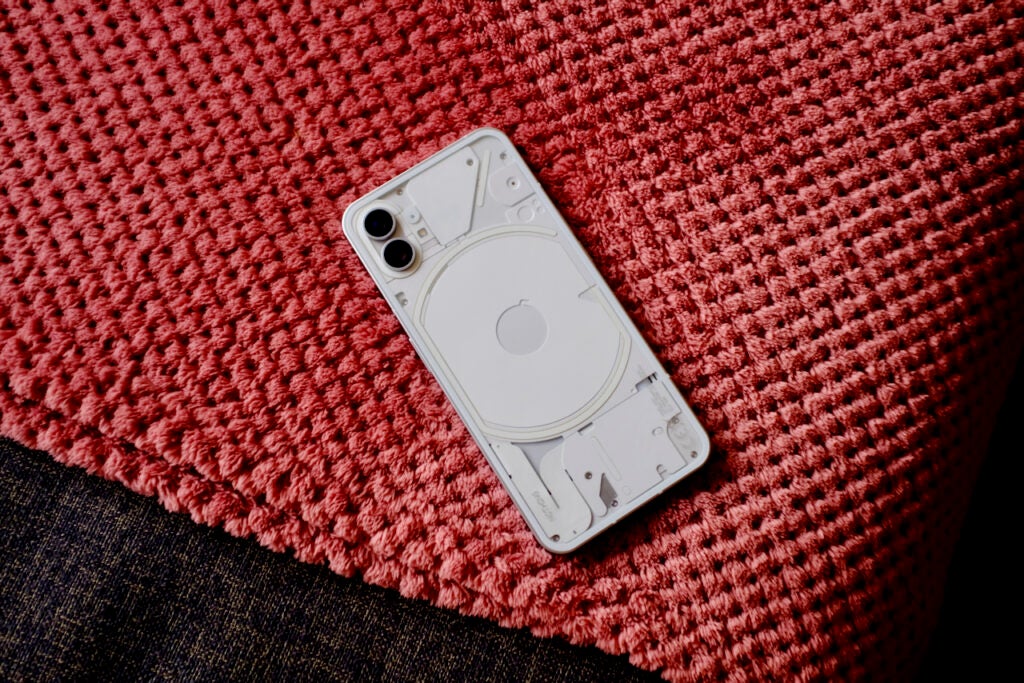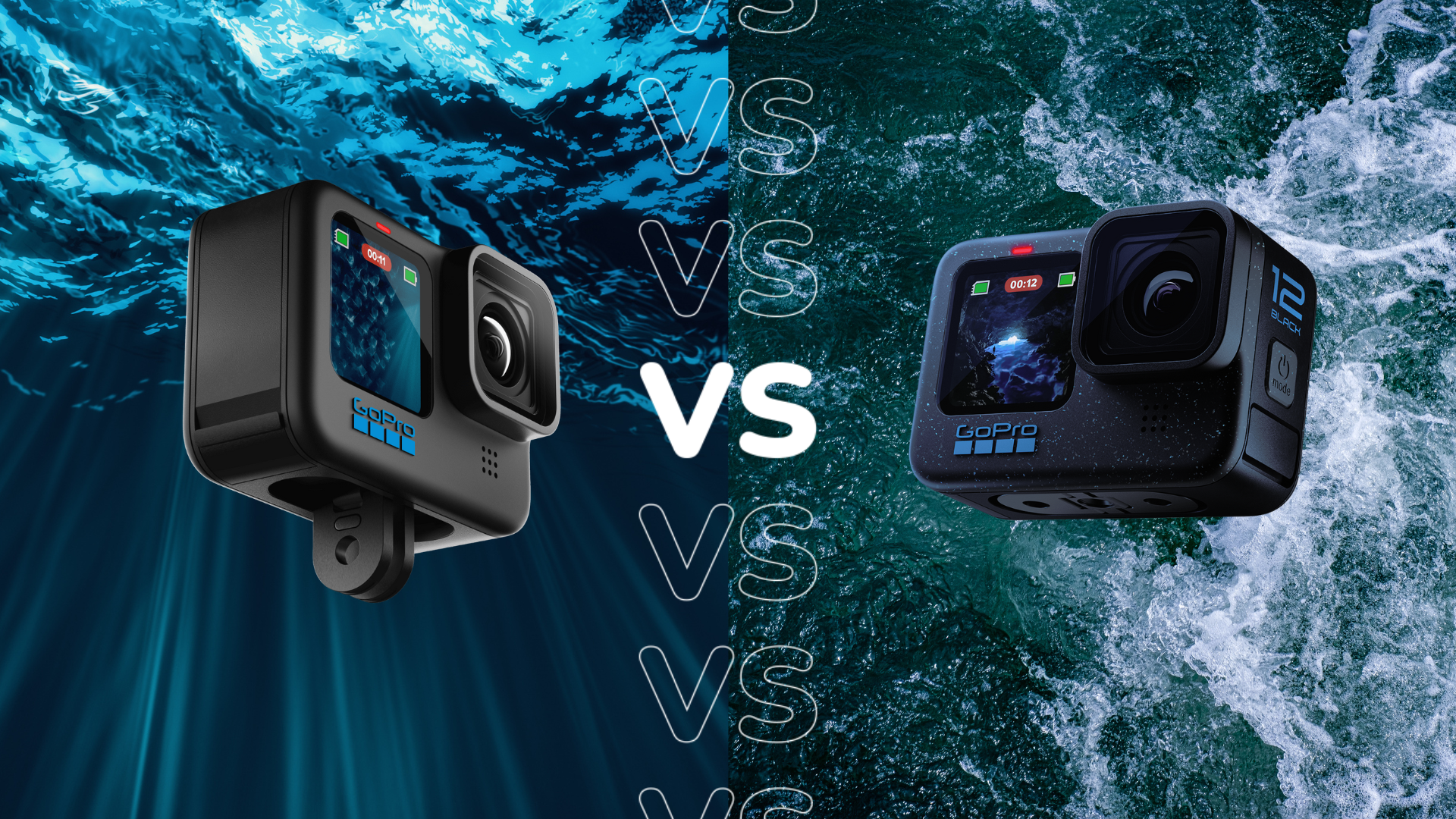Nothing Phone (2) vs Nothing Phone (1): Has Nothing changed?

The Nothing Phone (2) has finally been announced and it’s brought about a lot of changes compared to the original.
The release of the first Nothing Phone (1) took the internet by storm thanks to its quirky branding and transparent design. Now, Nothing has finally graced us with the second edition Nothing Phone, which will be available to buy in the UK from the 13th of July onwards.
But what has changed from the original? We’re going to be taking a deeper look into both the Nothing Phone (1) and Nothing Phone (2) to decide if the second edition is really worth the upgrade, and if Nothing has really changed.
Nothing Phone (2) features an improved Glyph Interface
One feature that differentiates both Nothing Phones from most other smartphones on the market is the Glyph Interface – essentially a range of LEDs embedded within the transparent rear of the phones that can be used for a variety of functions.
That includes flashing when getting calls and notifications (which can be customised on a per-app or per-person basis), acting as a fill light for the camera in low-light environments and, new to the Phone (2), the ability to display countdown timers as well as app status updates from apps like Uber and Deliveroo.
Compared to the Phone (1), the Glyph interface can both go brighter and dimmer, and it has a built-in light sensor to automatically adjust the brightness based on ambient light. There’s also the Glyph composer to create your own visual ringtones, though this will come to the Nothing Phone (1) later down the line in the form of a software update.
New camera sensor on the Nothing Phone (2)
Despite being a mid-range handset, Nothing opted to include two 50-megapixel sensors on its first device, with the second being an ultrawide camera. The main 50MP lens is a Sony IMX766 sensor, which touts OIS (optical image stabilisation).
We found the camera to be more than serviceable in most conditions, with well-lit situations looking especially bright, colourful and detailed.
Nothing kept a similar setup for the Phone (2) with the same dual 50MP camera array, but upgraded the main sensor to feature the Sony IMX890. It comes equipped with an advanced 18-but ISP (image signal processor) that allows the Nothing Phone (2) to process camera data up to 4,000 times more than its predecessor.
It also comes with a new Advanced HDR algorithm that takes eight frames with varying exposure levels, allowing for more detail to be preserved in every snap.
Upgraded Snapdragon chip on the Phone (2)
The Nothing Phone (1) came kitted out with a Qualcomm Snapdragon 778G+ chipset. This chipset is definitely not a power juggernaut, which did result in some mixed results in terms of performance, although this could also be due to the software optimisation.

For the Nothing Phone (2), Nothing decided to use the Qualcomm Snapdragon 8+ Gen 1 chipset, which was released in 2022. Qualcomm claims that this chip offers up to a 10% boost in CPU performance and up to 30% improved CPU power efficiency over its predecessor, which puts it head and shoulders above the Snapdragon 778G+ in terms of power.
This suggests that the Nothing Phone (2) will be able to handle gaming and day-to-day use better than its predecessor, and we would hope that any lingering software issues have also been ironed out, leading to an overall smoother experience.
The Nothing Phone (1) is more affordable
The first Nothing Phone (1) came out as a solid mid-range contender with a very reasonable asking price. The base 8GB RAM 128GB storage model costs £399/$390/€469 and came in two colourways, Black or White.
The latest model has seen a hefty price hike in comparison, likely due to the upgraded internal specs and new features. The same base model comes out at £579/$599/€679, and is available in either White or Grey. While this still keeps it in the mid-range phone price range, it’s a lot less affordable than its predecessor.







